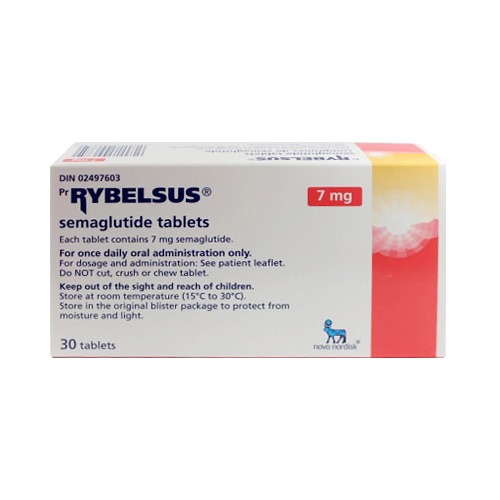Before Rybelsus is Prescribed
Rybelsus is a prescription medication used to treat type 2 diabetes. It should only be taken under the supervision of a healthcare professional and as directed by your doctor. Your doctor will need to know about any personal or family history of thyroid C cell tumors.
What is Rybelsus Used For?
It is used to improve blood sugar control in patients with type 2 diabetes. It works by mimicking the effects of glucagon-like peptide-1 (GLP-1), a hormone that helps regulate blood sugar levels. This medication should be used alongside a healthy diet and exercise plan to achieve maximum effectiveness.
Precautions and Warnings of Rybelsus
Before taking Rybelsus, inform your doctor if you have a history of diabetic retinopathy or trouble swallowing. This medication may increase the risk of developing diabetic retinopathy. It is a condition that affects the blood vessels in the eyes.
It should not be taken by patients with type 1 diabetes or those who have had diabetic ketoacidosis. This is a serious complication of diabetes. If you experience nausea, vomiting, stomach pain, confusion, excessive thirst or urination during treatment, call your doctor immediately.
Side Effects of Rybelsus
The most common side effects of Rybelsus include nausea, diarrhea, vomiting, decreased appetite, and indigestion. These side effects typically improve over time as your body adjusts to the medication. However, if these symptoms persist or worsen, contact your doctor for further guidance.
Side effects can include:
- confusion
- diarrhea
- nervousness
- cough
- nightmare
- chills
- cool, pale skin
- dizziness
- seizures
- slurred speech
- nausea
- darkened urine
- difficulty swallowing
- bloating
- Anxiety
- cold sweats
- unusual tiredness or weakness
- loss of appetite
- trouble breathing
- fever
- increased hunger
- indigestion
- skin rash
- vomiting
- pain in the stomach, side, or abdomen, possibly radiating to the back
- fast heartbeat
- large, hive-like swelling on the face, eyelids, lips, tongue, throat, hands, legs, feet, or sex organs
- yellow eyes or skin
- headache
- tightness in the chest
- depression
- blurred vision
- constipation
How Rybelsus Works
Rybelsus is a GLP-1 receptor agonist. It activates the same receptors as GLP-1 to help regulate blood sugar. It works by stimulating the release of insulin from the pancreas and slowing down the rate at which glucose is absorbed. This helps control blood sugar levels after meals and throughout the day.
Dosage of Rybelsus
The recommended starting dose for Rybelsus is 3 mg taken orally once daily, at least 30 minutes before your first meal of the day. Your doctor may increase the dose to 7 mg or 14 mg depending on your blood sugar levels and response to the medication. It is important to follow your doctor's instructions and not adjust the dosage without consulting them first.
Can Rybelsus be taken with other diabetes medications?
You should not take drugs that manage similar symptoms unless prescribed by your doctor. This can increase your risk of side effects without providing a therapeutic benefit.
What should I do if I miss a dose of Rybelsus?
If you miss a dose, take it as soon as you remember, unless it is close to the time for your next scheduled dose. In that case, skip the missed dose and take your next dose at the regular time. Do not take double doses to make up for a missed one.
Can Rybelsus cause low blood sugar?
It is possible for Rybelsus to cause low blood sugar, especially when taken in combination with other medications. Symptoms of low blood sugar may include dizziness, shakiness, sweating, and blurred vision. If you experience these symptoms, check your blood sugar levels and treat accordingly as directed by your doctor.
